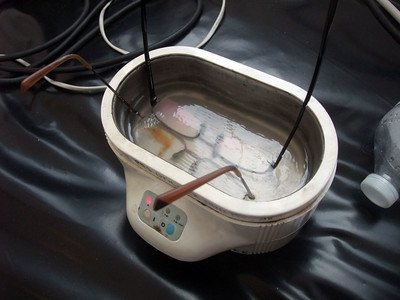If your bricks have seen better days, covered in layers of dirt, grime, or stubborn mortar stains, you might be wondering: Is hydrochloric acid the miracle solution you need?
The short answer is yes—it’s powerful, effective, and widely used in brick cleaning. But before you grab a bottle and start scrubbing away, there are a few crucial things you need to know to avoid damaging your bricks or, worse, harming yourself.
What Is Hydrochloric Acid and Why Use It on Bricks?

Hydrochloric acid (also known as muriatic acid) is a strong, corrosive acid commonly used in masonry work to remove cement stains, efflorescence (those white, powdery deposits on bricks), and tough grime that won’t budge with just water and detergent.
It works by breaking down mineral deposits and dissolving stubborn stains, making your bricks look almost brand new. However, because it is so powerful, improper use can lead to permanent damage to the bricks or even serious injury.
When Should You Use It?
While hydrochloric acid is incredibly effective, it’s not something you should use on bricks casually. Here’s when it makes sense to use it:
- Mortar Stains – If you’ve done some brickwork and dried mortar is stubbornly clinging to the surface, hydrochloric acid can help break it down.
- Efflorescence – Those annoying white deposits caused by salts in the brick? Hydrochloric acid can dissolve them quickly.
- Rust or Heavy Grime – When regular cleaning methods fail, hydrochloric acid is a last resort to remove deeply embedded stains.
- Weathered Bricks – If your bricks have darkened over time due to pollution or prolonged exposure to the elements, hydrochloric acid can restore their original color.
Precautions Before You Begin
Using hydrochloric acid requires serious safety measures. This isn’t your average household cleaner—it’s a highly corrosive chemical that can burn skin, damage your eyes, and release harmful fumes. Mishandling it can lead to accidents that are difficult to reverse.
Here’s what you need to do before starting:
Wear Safety Gear – At a minimum, use rubber gloves, safety goggles, long sleeves, and a respirator mask.
Protect Nearby Surfaces – Acid can damage plants, metal fixtures, and concrete. Cover anything nearby that might be at risk.
Dilute Properly – Never use full-strength hydrochloric acid. A common ratio is 1 part acid to 10 parts water.
Always Add Acid to Water – Never pour water into acid—it can cause dangerous splashes.
Work in a Well-Ventilated Area – The fumes are strong and can be harmful if inhaled.
Test a Small Area First – Before applying acid to the entire surface, test it on a small, hidden area to ensure it won’t cause unexpected damage.
Step-by-Step Brick Cleaning Guide
1. Prep the Area – Before applying acid, soak the bricks with clean water. This prevents them from absorbing too much acid, which could weaken them.
2. Mix the Solution – In a plastic bucket (never metal), mix 1 part hydrochloric acid with 10 parts water. Stir with a wooden stick.
3. Apply the Acid – Use a stiff brush or sprayer to apply the solution to the bricks. Let it sit for about 10 minutes but never let it dry on the surface.
4. Scrub the Bricks – Use a stiff-bristle brush to scrub away stains and grime. For particularly stubborn stains, a second application may be necessary.
5. Rinse Thoroughly – Wash off all acid residue with plenty of clean water. You don’t want to leave any behind, as it can continue eating away at the bricks over time.
6. Neutralize (Optional but Recommended) – Some people recommend neutralizing with a baking soda and water mixture (1 cup baking soda per gallon of water) to prevent lingering acid from causing damage.
7. Dry and Inspect – Allow the bricks to dry completely before evaluating the results. If necessary, repeat the process, but avoid excessive use to prevent damage.
Common Mistakes to Avoid
- Using Too Much Acid – More is not always better. Using too strong of a mixture can eat away at the bricks instead of cleaning them.
- Not Rinsing Properly – Acid residue left on the bricks can cause deterioration over time.
- Using Metal Tools – Acid can react with metal and cause corrosion.
- Ignoring Safety Measures – Skipping gloves or goggles can lead to serious chemical burns.
- Applying to Dry Bricks – Always wet the bricks first to prevent excessive absorption of the acid.
The Verdict: Is It a Miracle Fix?
Hydrochloric acid is definitely a powerhouse when it comes to cleaning bricks, but it’s not a magic solution. It requires proper handling, safety measures, and careful application to avoid damage. If used correctly, though, it can restore your bricks to their former glory with impressive results.
So, is it the right choice for you? If your bricks are heavily stained and nothing else has worked, then yes, hydrochloric acid might just be the miracle fix you need—but only if you use it wisely! However, if you prefer a gentler approach or are concerned about potential risks, there are plenty of alternative methods that can help restore your bricks without the need for harsh chemicals.



